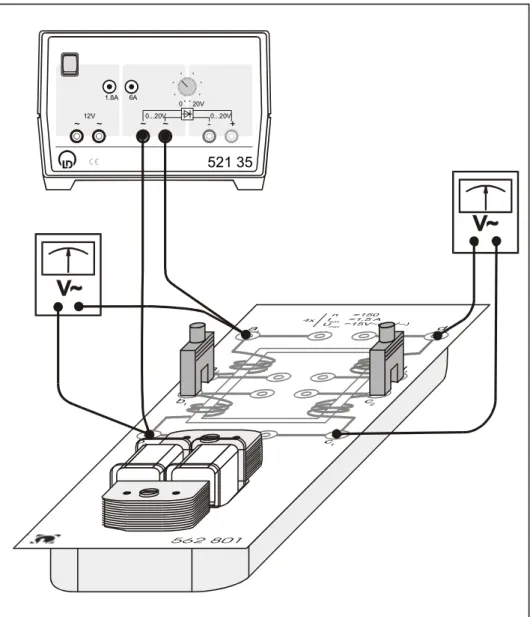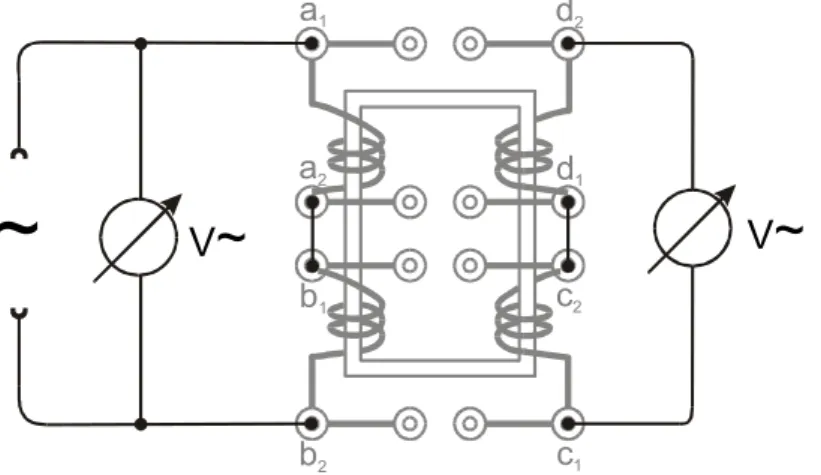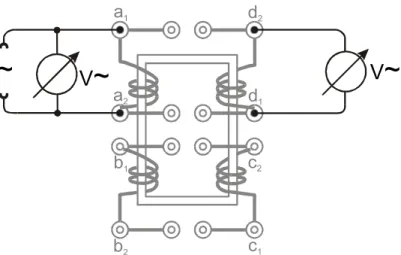IIE4
Modul Electricity II
Transformer
The goal of this experiment is, on the one hand, to verify experimentally
the transformer laws of unloaded transformer, and on the other hand, the
behavior of insulating and auto transformer should be examined.
Experiment IIE4 - Transformer
The goal of this experiment is, on the one hand, to verify experimentally the transformer laws of unloaded transformer, and on the other hand, the behavior of insulating and auto transformer should be examined.
c
AP, Department of Physics, University of Basel, March 2021
1.1 Preliminary Questions
• How does a transformer function? Explain in your own words.
• Where are transformers used in the everyday life? Examples?
• Are all modern transformers according to the principles described below?
• Deduce a formula for the relationship between the primary and secondary current.
1.2 Theory
A transformer essentially consists of two coils, which are connected inductively by an iron core. The primary coil with N
1windings is connected to an alternating voltage U
1. Thereby, a current flows through the coil and generates a magnetic flux ∆Φ . This is described by the law of induction:
U = − N ∆Φ
∆ t (1.1)
This flux is passed through the iron core in the secondary coil, where it in turn induces a current and a voltage according to (1.1). Also:
∆Φ
∆ t = − U
1N
1used in
U
2= − N
2∆Φ
∆ t results in:
U
1U
2= N
1N
2(1.2)
Since energy conservation is guaranteed here, the power ( =
energytime) must also be obtained. It follows that the line of the primary coil to that of the secondary coil is equivalent. The electric power is defined as follows:
P = U · I (1.3)
Thus, a connection between the primary and secondary current independent of the turns are made.
1.3 Experiment
1.3.1 Equipment
Component Number
Multimeter 2
Connecting Cables 6 Connecting Bridges 4
Voltage Source 1
Exercise Transformer 1
3
1.3.2 Experimental Setup
~
~ ~ ~
521 35
0...20V 1.8A
12V 6A
0...20V 0 20V
- +



